Gaagal Wanggaan (South Beach) National Park
Learn more
Learn more about why this park is special
Gaagal Wanggaan (South Beach) National Park is a special place. Here are just some of the reasons why:
Enduring Aboriginal culture
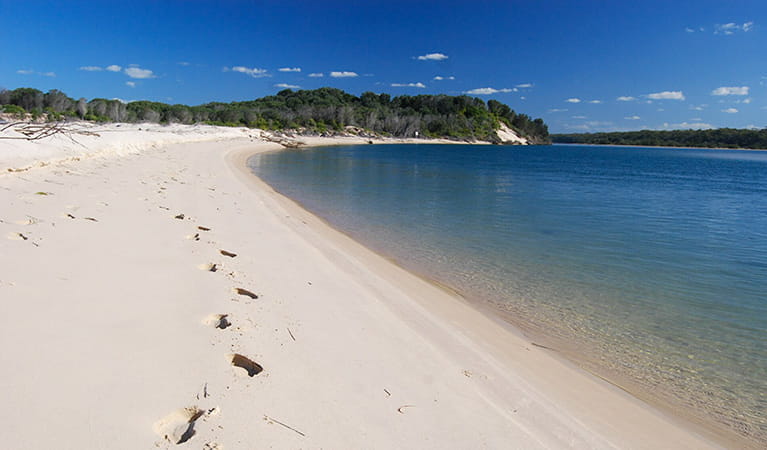
Gaagal Wanggaan (South Beach) National Park has tremendous cultural significance for the Gumbaynggirr Aboriginal community of Nambucca Valley, with sites that demonstrate continuous use of the area for thousands of years. Gumbaynggirr People used the lands and waterways for sustenance and ritual practices; they continue to use it today, passing knowledge through generations. In recognition of this living heritage, the national park is jointly managed by the NSW National Parks and Wildlife Service and Aboriginal Traditional Owners. Their contribution and knowledge of the area is central to the management of the park and to educating visitors on Aboriginal culture.
An insect paradise
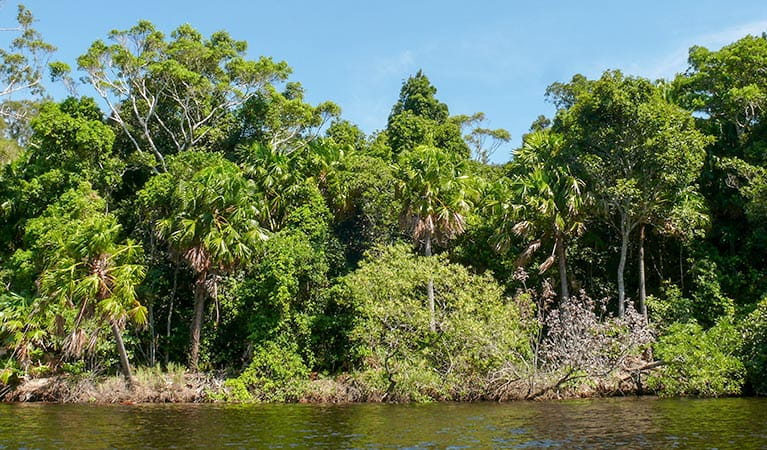
Making up the bulk of the dry land in the park, sand dunes and dry forests of banksia, blackbutts and scribbly gums encourage a rich undergrowth of shrubs and grasses. Flowers bloom in late winter and early spring, and this attracts a variety of insects and butterflies, including the black grass-dart butterfly. Gaagal Wanggaan is also home to an array of bird species, including white-bellied sea eagles, ospreys, white-faced herons, azure kingfishers and black-necked storks, as well as the endangered little tern.
- Warrell Creek Warrell Creek offers opportunities for kayaking, canoeing and fishing, with nearby places to picnic and secluded camping sites
Plants and animals protected in this park
Animals
-
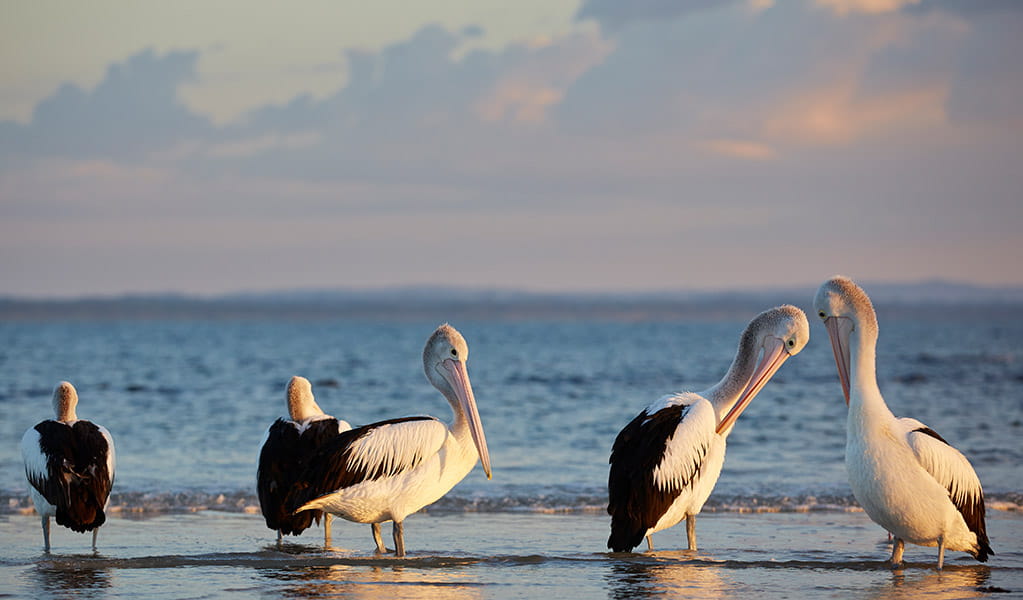
Australian pelican (Pelecanus conspicillatus)
The curious pelican is Australia’s largest flying bird and has the longest bill of any bird in the world. These Australian birds are found throughout Australian waterways and the pelican uses its throat pouch to trawl for fish. Pelicans breed all year round, congregating in large colonies on secluded beaches and islands.
-
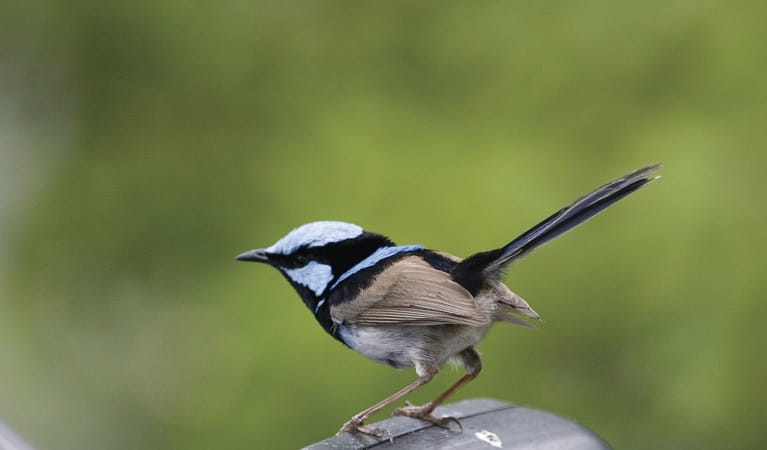
Superb fairy wren (Malurus cyaneus)
The striking blue and black plumage of the adult male superb fairy wren makes for colourful bird watching across south-eastern Australia. The sociable superb fairy wrens, or blue wrens, are Australian birds living in groups consisting of a dominant male, mouse-brown female ‘jenny wrens’ and several tawny-brown juveniles.
-
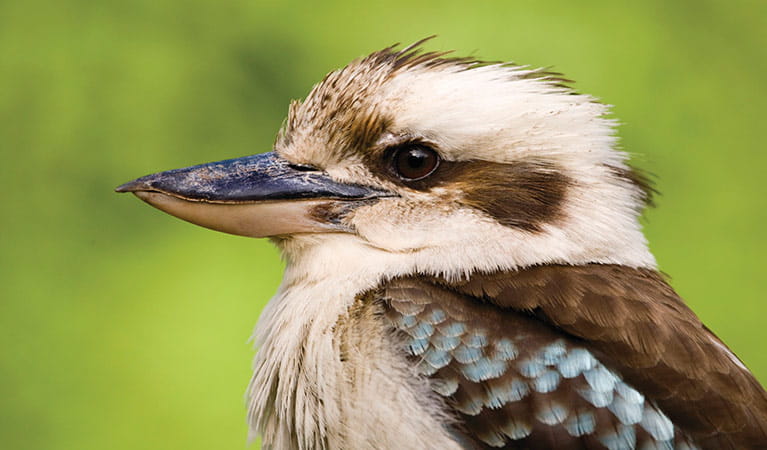
Kookaburra (Dacelo novaeguineae)
Of the 2 species of kookaburra found in Australia, the laughing kookaburra is the best-known and the largest of the native kingfishers. With its distinctive riotous call, the laughing kookaburra is commonly heard in open woodlands and forests throughout NSW national parks, making these ideal spots for bird watching.
Plants
-
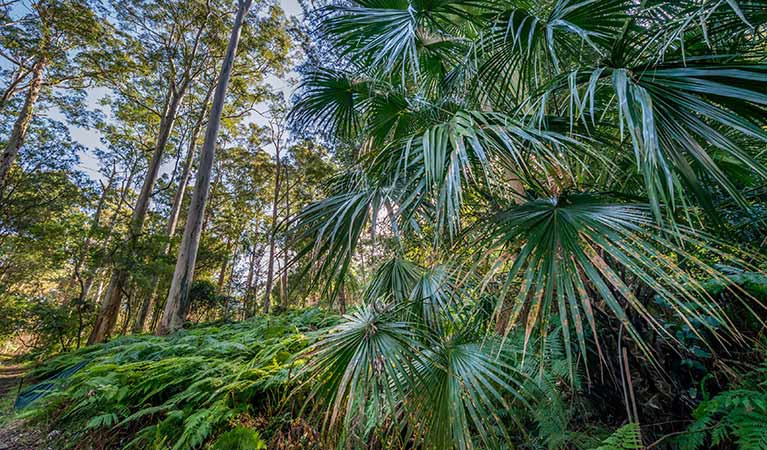
Cabbage palm (Livistona australis)
With glossy green leaves spanning 3-4m in length and a trunk reaching a height of up to 30m, the cabbage tree palm, or fan palm, is one of the tallest Australian native plants. Thriving in rainforest margins along the east coast of NSW, in summer this giant palm produces striking spikes of cream flowers which resemble cabbages.
-
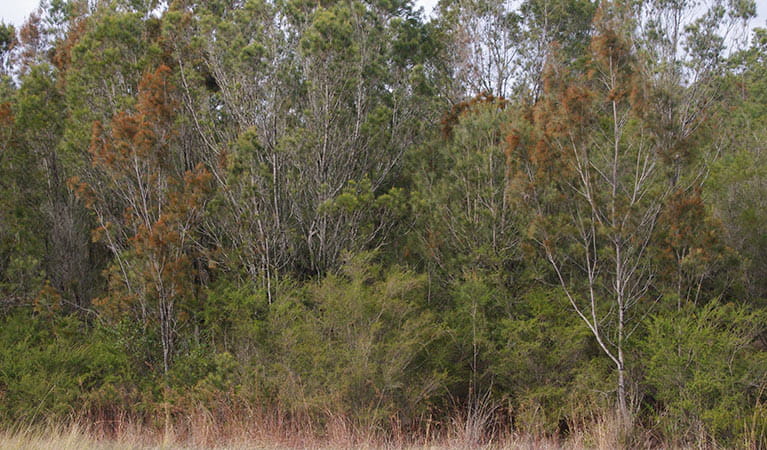
Black sheoak (Allocasuarina littoralis)
The black sheoak is one of a number of casuarina species found across the east coast of Australia and nearby tablelands. Growing to a height of 5-15m, these hardy Australian native plants can survive in poor or sandy soils. The barrel-shaped cone of the black sheoak grows to 10-30mm long.
Look out for...
Kookaburra
Dacelo novaeguineae
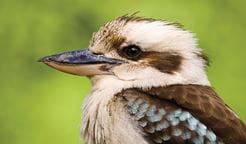
Of the 2 species of kookaburra found in Australia, the laughing kookaburra is the best-known and the largest of the native kingfishers. With its distinctive riotous call, the laughing kookaburra is commonly heard in open woodlands and forests throughout NSW national parks, making these ideal spots for bird watching.